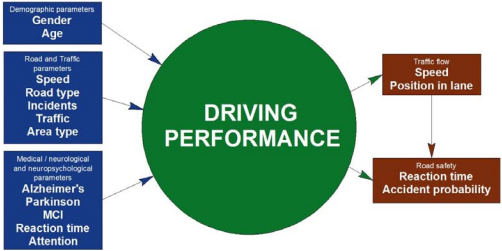
This paper presents the design of a large driving simulator experiment aiming to assess theeffect of cerebral diseases on driver performance. The experiment was designed by aninterdisciplinary team, including neurologists, neuropsychologists and transportationengineers. The pathologies considered include Alzheimer’s disease, Parkinson’s disease,cerebrovascular disease and Mild Congitive Impairment. The sample consists of both healthyand impaired drivers, with oversampling of the >55 years age group, in which theseconditions are more prevalent. A total sample of 300 drivers will be examined within a 2years period. The experiment consists of three types of assessment: (i) clinical medical andneurological assessment, (ii) neuropsychological assessment by means of appropriate tools,and (iii) driving simulation experiment. The driving simulator experiment in particularconsists of three parts. The first and second part, in rural and urban area respectively, includesscenarios where driver performance is measured in ‘typical’ and ‘distracted’ drivingconditions, at moderate or high traffic, in a within-subject design. The third part, concerns atest of basic driver skills at operational level, for specific tasks. Driver performance isexamined in terms of both traffic (e.g. speed, lateral position etc.) and safety (e.g. reactiontime) parameters. Preliminary results from the pilot-testing phase (25 drivers, out of which 18impaired) already suggest detectable differences in specific performance measures betweenhealthy and impaired drivers. Parkinson’s disease patients in particular show the mostimpaired driving performance. The results of this research extend existing knowledge onimpaired driving mechanisms and driving performance due to cerebral diseases, as well as onthe methods for designing and conducting related simulator experiments (e.g. for otherpathologies, fatigue, alcohol, etc.).
| ID | pc168 |
| Presentation | |
| Full Text | |
| Tags | driver behaviour, driving simulator |







